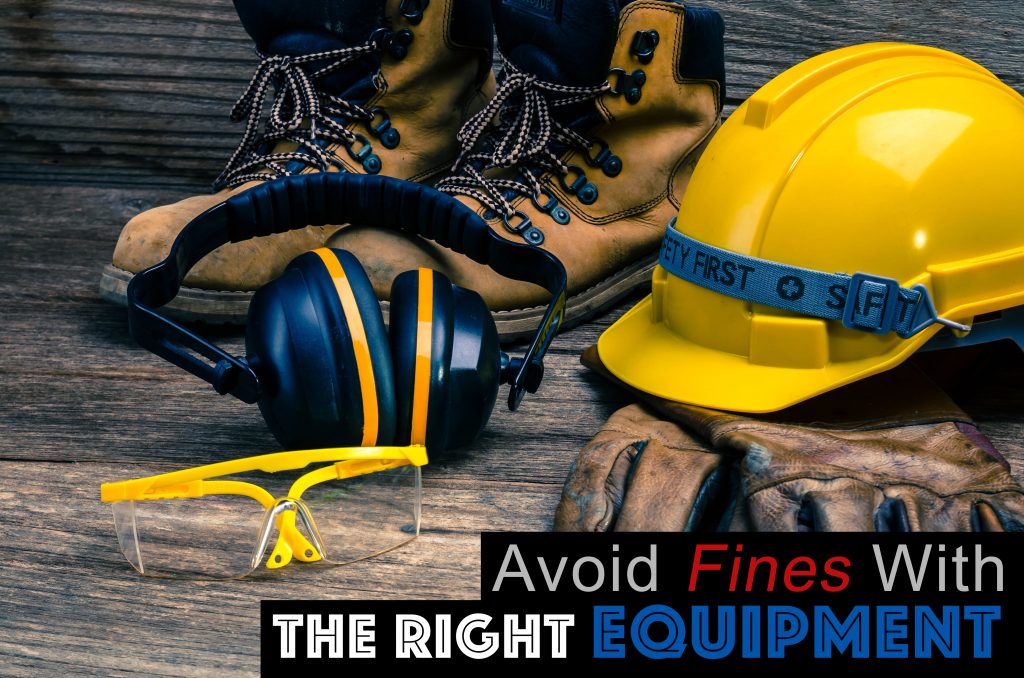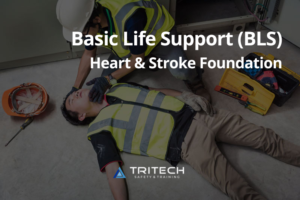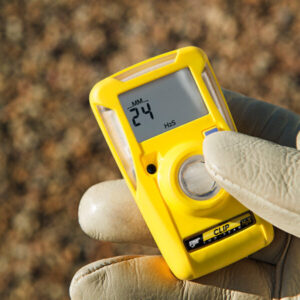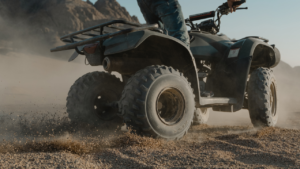12 OSHA Fines That Can Be Avoided with the Right Equipment
Millions of people work in dangerous environments across the nation on any given day.
In 2015, there were 232,629 workplace-related injuries in Canada, according to the Association of Workers’ Compensation Boards of Canada. And out of those injuries, there were 852 fatalities.
It’s a terrifying prospect, not just for employees but also for employers. The key to protecting your company and your employees is Workplace Safety and Training.
The proper workplace safety, training, and equipment can ensure that not only are your employees protected from injury and fatality; it can also save you money in the long run.
OSHA, the Occupational Safety and Health Administration, is the organization in charge of reviewing your businesses safety standards. And if you fail in any area, your company could face hefty fines.
Starting in August 2016, your business could face the following fines:
- 1.) Other than serious violation: $12,600 maximum penalty
- 2.) Serious violation: $12,600 maximum penalty
- 3.) Willful violation: $126,000 maximum penalty
- 4.) Repeat violation: $126,000 maximum penalty
-
So, how can you ensure that your business avoids these new, higher fines? The following includes a list of the top 12 OSHA fines that can easily be avoided if you have the right equipment.
-
1. Respiratory Protection
In 2015, there were 3,305 citations related to respiratory protection (1910.134). The standard is to protect employees who work around harmful dust, fog, fumes, mists, gasses, smokes, sprays, and vapors.
OSHA sets expectations for control measures, respirator use, cleaning and repair, written programs, and worker medical evaluations.
Equipment Needed: Your company is required to use respirators that fit the OSHA respirator standard. OSHA provides an “Advisor Genius” to help you find the respirators that fit your business. There are a few factors to consider:
It must match the type and amount of hazardous exposure at your business. The respirator should take into account your job-site and worker characteristics.
2. Scaffolding
In 2015, there were 4,295 citations regarding scaffolding (1926.451). According to OSHA, scaffolding places workers at risk of falls, slips or strikes by falling objects. To avoid a fine, you must follow a specific set of requirements for the design, construction, and use of scaffolds.
Equipment Needed: To avoid a fine, your scaffolding should meet a few key standards: fall arrest systems, guardrail height, crossbracing, mid rails, footings, platforms, ties and braces, and capacity. See the full details HERE.
3. Hazard Communication
There were 5,192 citations of hazard communication in 2015 (1910.1200). This standard addresses chemical hazards produced or used in the workplace and governs how those hazards are communicated to workers through things like labels, safety data sheets, and classification standards.
Equipment Needed: To avoid a hefty fine, your company must follow the Globally Harmonized System of Classification and Labeling of Chemicals (GHS). HERE is a course on this very topic.
The Required Equipment is simple; you’ll need personal protective equipment that matches your list of chemicals on site as well as material safety data sheets (MSDS) and harmonized labels and other forms of warning written out.
4. Fall Protection
In 2015, there were 6,721 citations due to falling protection standards (1926.501). These standards were designed to prevent falls, the leading cause of death in construction. This section sets requirements for employers to provide fall protection to employees working or walking on surfaces that may be unstable or have unprotected sides and edges.
Equipment Needed: Depending on your business situation, your required equipment could include guardrail systems, safety net systems, or personal fall arrest systems.
5. Head Protection
Head protection standards (1915.155) refer to standards that protect workers from injuries caused by falling or flying objects, or by bumping the head against a fixed object.
Equipment Needed: Workers must wear a protective helmet (hard hat) when working in risk areas where there is a potential for head injury from falling objects. Workers must also wear a protective helmet to reduce the risk of electrical shock and burns.
6. Wiring Design and Protection
The Wiring Design & Protection Standards (1926.404) refer to a set of regulations that protect against the most common hazard on construction sites: ground fault electrical shock.
Most fines occur due to unsafe equipment, poor installation, or unsafe work practices.
Equipment Needed: The regulations require the employer to use either ground fault circuit interrupter equipment or and assured equipment grounding conductor program.
7. Ladders
All Ladders in your workplace must be capable of supporting a variety of loads without failure. These set of standards (1926.1053) protect employees from falls and other injuries relating to ladder safety.
Equipment Needed: All ladders must have rungs, cleats, and steps that are parallel, level, and uniformly spaced. There are also three types of ladders to consider at your workplace: self-supporting portable ladders, portable ladders (not self-supporting), fix ladders.
Ladders must be able to hand at least four times the maximum intended load (portable and self-supporting) or at least two loads of 114 kg each (fix ladders).
8. Aerial Lifts
An aerial lift is any vehicle-mounted device used to elevate personnel. The Standards (1926.453) refer to extendable boom platforms, aerial ladders, articulating (jointed) boom platforms, vertical towers, and any other combination. The standards protect your employees from falls, tip-overs, ejections, collapses, electrical shock, and more.
Equipment Needed: To avoid a fine, there are a few things to consider:
- A body belt must be worn and a lanyard attached to the boom or basket.
- Wheel chocks shall be installed before using an aerial lift.
- Upper and lower platform controls
- All welding on equipment must conform to standards
9. Specific Excavation Requirements
Specific excavation requirements (1926.651) refer to those standards dealing with excavations on a job site. These standards can refer to utility installations such as sewer, telephone, fuel, electric, water lines, and more.
Equipment Needed: There are a few pieces of equipment required to avoid fines on these sites. Those pieces include, but are not limited to:
- Structural ramps and runways for employee access
- Cleats or other appropriate means to connect runway structural members
- Stairway, ladder, ramp, or other safe means of egress
- Warning vests of other suitable garments to mark danger
10. Medical Services and First Aid
The Medical Services & First Aid Standard () (1915.87) refers to the emergency medical services and first aid measures that are readily accessible to employees. This includes such regulations and the number of employees trained as first aid providers on each worksite and the on-site clinic or infirmary.
Equipment Needed: Depending on your worksite size and location, there are a few pieces of equipment that are required including an appropriate amount of first aid supplies located in a weatherproof container that is kept in a dry, sterile, and serviceable condition. Standard and Emergency First Aid Training is the best defense.
For worksites where an employee may be splashed with a substance that could result in serious injury, quick drenching and flushing facilities are required. Other equipment includes stretches, lifting bridles, and more.
11. Eye and Face Protection
In 2016, there were 1,201 citations regarding eye and face protection (1926.102). This set of regulations ensures that each affected employee uses the appropriate eye or face protection for their job. It protects against such hazards as flying particles, molten metal, liquid chemicals, acids, caustic liquids, chemical gasses or vapors, and injurious light radiation.
Equipment Needed: The equipment required should match the potential hazards found in the job area.
However, there are a few things to consider:
1. They shall fit snugly but not unduly interfere with movement.
2. They must be durable
3. They must be easily cleanable and capable of being disinfected
12. Foot Protection
Foot protection (1910.136) refers to the type of protective footwear that is appropriate for employees. These standards protect workers in areas where there is a danger of foot injuries from falling or rolling object, object piercing the sole, or electrical hazards.
Equipment Needed: Protective footwear must meet ANSI Z41 or equivalent design requirements.
There are a few things to consider:
1. Safety shoes may be required to provide special electrical conduction or insulation to prevent electric shock.
2. Chemical-resistant boots may be required to provide protection from caustic, reactive, toxic, or corrosive materials.
3. Slip-resistant soled shoes should be worn when working on slippery surfaces.
- TriTech Safety & Training Inc, located in Grande Prairie is in the best position to keep you up to date with the essential and important industry practices to prevent avoidable accidents with our knowledge of Safety. For more information go to https://tritechsafety.ca/courses/





